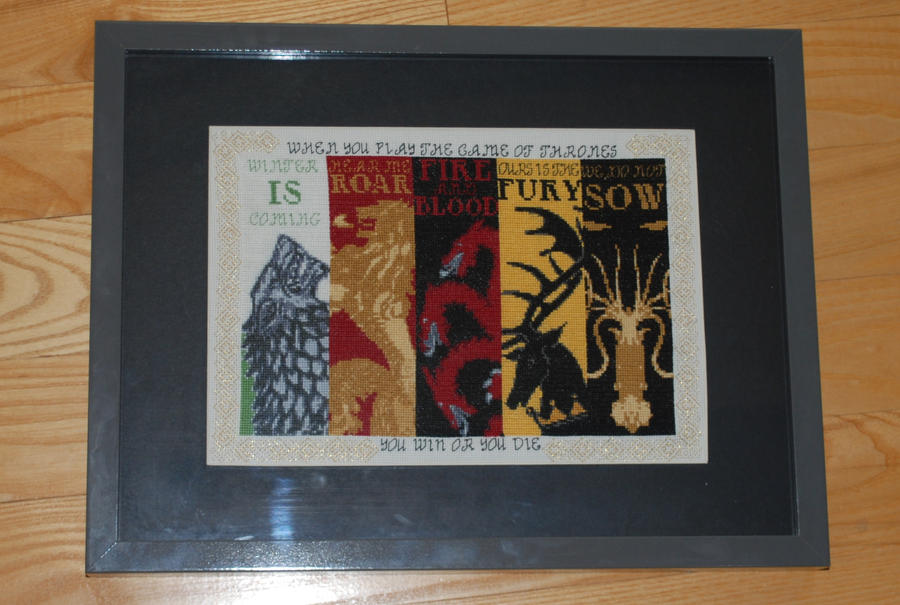Westeros Houses and Their Banners

Westeros banners – The realm of Westeros is home to numerous noble houses, each with its unique sigil and banner that represent their identity and lineage. These banners play a significant role in the political and military landscape of the Seven Kingdoms, serving as symbols of power, allegiance, and history.
The designs of these banners are often imbued with deep symbolism and meaning, reflecting the values, aspirations, and historical events associated with each house. By examining the banners of Westeros, we gain insights into the rich tapestry of this fictional world and the intricate relationships between its noble families.
Prominent Houses and Their Banners
| House | Banner Description | Image |
|---|---|---|
| Stark | A grey direwolf on a white field | [Insert Image] |
| Lannister | A golden lion rampant on a crimson field | [Insert Image] |
| Targaryen | A three-headed red dragon on a black field | [Insert Image] |
| Baratheon | A crowned stag on a golden field | [Insert Image] |
Evolution of Banners in Westeros

The banners of Westeros have a rich and storied history, dating back to the Age of Heroes. In the beginning, banners were simple designs, often depicting the sigil of the house that bore them. Over time, however, banners became more elaborate, and they began to be used to represent not only a house’s identity but also its alliances, loyalties, and territorial claims.
One of the most important ways that banners have been used in Westeros is to represent alliances. When two houses form an alliance, they often combine their banners into a single design. This combined banner is then flown to show that the two houses are united in purpose. For example, the banner of House Stark and House Tully is a combination of the Stark direwolf and the Tully fish. This banner has been flown in battle on many occasions, and it is a symbol of the strong alliance between the two houses.
Banners have also been used to represent loyalties. When a house swears fealty to another house, it often adopts the banner of that house as its own. This is a way of showing that the house is loyal to the other house and that it will support it in war and peace. For example, the banner of House Bolton is a flayed man. This banner is a reminder of the Bolton’s loyalty to House Stark, and it has been flown in battle on many occasions.
Finally, banners have been used to represent territorial claims. When a house claims a piece of land, it often plants its banner on that land. This is a way of showing that the house claims the land as its own, and that it will defend it from any who try to take it. For example, the banner of House Lannister is a golden lion. This banner has been flown on many castles and fortresses throughout Westeros, and it is a symbol of the Lannister’s claim to the land.
The banners of Westeros are a powerful symbol of the history, culture, and politics of the realm. They have been used to represent alliances, loyalties, and territorial claims for centuries, and they continue to play an important role in the shaping of Westeros’s political landscape.
The Impact of Banners on Westeros’s Political Landscape
The banners of Westeros have had a significant impact on the political landscape of the realm. They have been used to rally armies, to intimidate enemies, and to negotiate peace treaties. In some cases, banners have even been the cause of war.
One of the most famous examples of the impact of banners on Westeros’s political landscape is the War of the Five Kings. This war was fought between five different houses, each of which claimed the Iron Throne. The banners of these houses were flown on battlefields throughout the realm, and they were a constant reminder of the stakes of the war.
The War of the Five Kings is just one example of the impact that banners have had on Westeros’s political landscape. Throughout history, banners have been used to shape the course of wars, to determine the fate of kingdoms, and to change the lives of countless people.
Cultural Impact of Westeros Banners

In the vast realm of Westeros, banners have transcended their humble origins as mere identifiers to become integral threads woven into the cultural fabric of its people. These vibrant symbols have left an indelible mark on fashion, heraldry, and even language, shaping the collective identity and emotional connections within the realm.
Fashion and Heraldry, Westeros banners
The intricate designs and colors of Westeros banners have deeply influenced fashion trends. Noble houses often incorporate their sigils into clothing and accessories, creating a visual language that proclaims their lineage and allegiances. The Stark sigil, a direwolf on a grey field, has become synonymous with wintery fashion, while the Lannister sigil, a golden lion on a crimson field, evokes images of wealth and power.
Heraldry, the study of coats of arms, has also been profoundly shaped by Westeros banners. Each house’s sigil represents its history, values, and aspirations. These sigils are proudly displayed on shields, tapestries, and other objects, serving as visual representations of the house’s identity.
Language and Identity
The language of Westeros has been enriched by the symbolism of banners. Phrases such as “to fly one’s banner” or “to raise a banner” have become synonymous with declaring one’s allegiance or taking a stand. The sigils of different houses have also inspired countless songs, poems, and stories, further embedding them into the cultural consciousness.
Moreover, banners have fostered a deep sense of identity among the people of Westeros. Each house’s sigil represents not only a family but also a region, a set of values, and a shared history. By displaying their banners, people proclaim their loyalty and connection to their community.